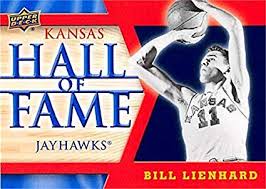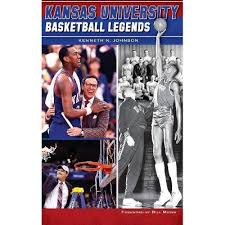The NBA Finals date back to 1947 (when they were known as the Basketball Association of America Finals) and the very 1st NCAA tourney was held in 1939. Olympic basketball competition is even older: it debuted as a demonstration event in 1904 and the men’s version became a medal sport in 1936, with the women finally getting their chance to go for the gold in 1976. The United States has dominated Olympic basketball competition from the start: the men have won 15 gold medals in the 18 tournaments they have participated in during the past 84 years, while the women have won 8 gold medals in the 10 tournaments in which they have competed during the past 44 years. Those of you who were looking forward to the 2020 Olympics opening ceremonies in Tokyo on July 24, 2020 will have to wait an extra 364 days, as the coronavirus caused a postponement until July 23, 2021. Due to the absence of college basketball since mid-March, HoopsHD’s Jon Teitel decided to fill the void by trying to interview as many prior Olympic players/coaches as possible so that you have something to read this summer while not watching the Summer Games. We continue our coverage by chatting with Dr. Kenn Johnson, KU alum and author of multiple books about KU basketball, about Bill Lienhard winning an NCAA title and gold medal in 1952.
Bill was born in Texas/raised in Kansas and led the state in scoring in 1948 during his senior year at Newton High School: what was his secret for being a great scorer? KU coach Phog Allen said, “With his one-handed shot, complete with leg kick, Lienhard had become such a deadly marksman that he could score consistently from the top of the key. He was one of the state’s best high school shooters in years.” His calling card was an outstanding set-shot which was described as “deadly against zone defenses”. A KU program described him as the “finest one-hand set shooter in Kansas basketball history.” Bill said “80-90 percent of the shots I took would have been three-point goals today. That is where I shot from: 20 to 30 feet out there.”
What made him choose Kansas for college? In 1948 Phog told all of his recruits that if they came to KU they would win the national championship and go to the Olympics. It was a proposal from “The Father of Basketball Coaching” that Bill could not turn down. It was also a promise that was kept.
He was a co-captain for Phog: what sort of relationship did they have? Lienhard was quoted as saying, “Dick Harp was a great innovator and Phog was a master motivator. He was a real innovator in his day in so many ways. I think that winning the national championship was his biggest thrill. It was the epitome!”
In the 1952 NCAA title game he scored 12 PTS in a win over St. John’s: what did it mean to him to win a title? After recovering from his early-season illness he became the team’s most consistent scorer, using his one-handed flick and kick of the leg to hit from all over the floor. His scoring helped the Jayhawks erupt for a 23-point second quarter and open up a 41-27 halftime lead. In a team photo taken moments after the win, Lienhard was shown delirious with joy.
He played for team USA at the 1952 Olympics: what did it mean to him to represent his country, and what did it mean to him to win a gold medal? Lienhard said, “The only teams coming on were the Russians and they were not very good. We beat them pretty handily the first time we played. The second time, we knew they could not run with us. There was not any question who would win.” So, while winning was easy, he was always proud of his service and gold medal.
He later served in the Air Force: what impact did his service have on him either on or off the court? After the Olympics Bill joined the Air Force, where he continued to play basketball for two years. Having also played basketball while in the service, I know from experience that he surely had a great time and was able to maintain and improve his skills.
After retiring from basketball he worked for a bank: how did he like it? He lived in Wichita for ten years before moving to Lawrence in 1965 where, using his degree from KU, he went to work for US Bank until retirement. He was most pleased to be able to return to Lawrence for the rest of his life and attend many of the Jayhawks’ games.
He is a member of the Kansas Athletics Hall of Fame and received the Kansas Sports Hall of Fame’s “Pride of Kansas” Award in 2012: what did it mean to him to receive such outstanding honors? “Thank you so much for this honor,” Lienhard said. “I am surprised and overwhelmed. It is much appreciated. I attribute my basketball success to my great coaches and teammates.”
His son Eric won a state basketball title in high school and his daughters Amy/Betsy played Big 10 volleyball: who is the best athlete in the family? Work ethic runs in the Lienhard family. All four children were active in a variety of sports. The family subscribed to the theory that the word “team” contains no personal pronouns so I do not believe that they ever considered which one was the best. It should be noted that four years after graduating from Emporia State Eric lost control of his car, which flipped and dropped 20 feet into a creek. After firefighters cut through the wreckage, he was flown by helicopter to the KU Medical Center and was listed with serious brain damage. After four months in a coma, he spent the next several years in rehab facilities before passing away in 2002.
He turned 90 this year: when people look back on his career, how do you think that he should be remembered the most? Athletically, he was a clearly a success at all levels. In high school he led the state in scoring, and at KU he helped the team win the NCAA national championship and the 1952 Olympics. He had a successful career in banking and a successful marriage and family he was most proud of.


